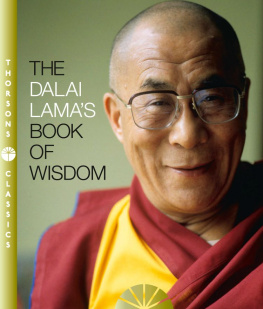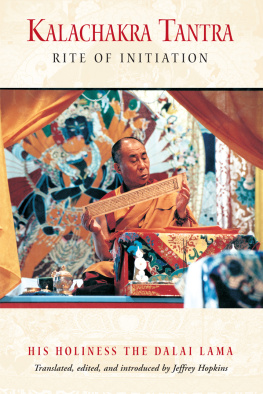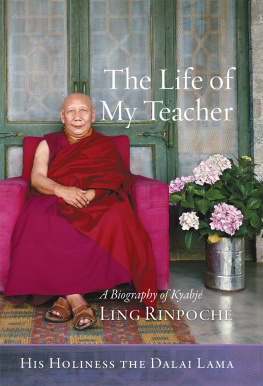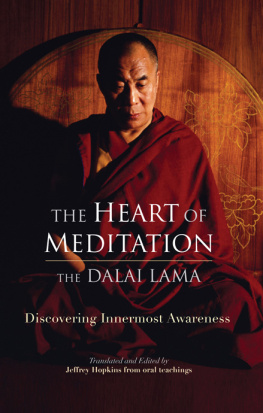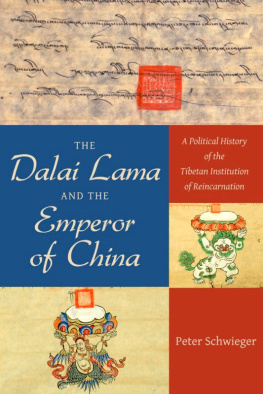
Discover the historical backdrop and key issues surrounding the Shukden controversy.

B EFORE THE TWENTIETH CENTURY , the figure of Shukden, or Dlgyal, was an obscure one in the pantheon of Tibetan Buddhisms many oracles and protectors. But after individuals within the Geluk tradition began to promote and disseminate the practice, division arose among Buddhists of different sects. Later, incidents within the exile community, as recounted in this book, prompted the Dalai Lama to investigate the practice more deeply. The fruits of this research are presented here, as are the statements made by His Holiness about it over the past forty years. Understanding the Case against Shukden uncovers the historical context behind this contentious practice, which dates back to the time of the Fifth Dalai Lama in the seventeenth century, and clarifies why the present Dalai Lama has been so vocal in countering it.

Understanding the Case against Shukden is a clarion call for unity among the Tibetan people and a vision for a more harmonious Tibetan Buddhist community.
Contents
Foreword by Lama Zopa Rinpoch
I AM VERY HAPPY that this compilation of advice from His Holiness the Dalai Lama combined with the results of extensive historical investigation into the question of Shukden, or Dlgyal, has been translated and made available in English. Much misinformation has been published on this topic, and so this book eliminates misconceptions and clarifies why His Holiness has spoken against the practice.
Several times, I have personally thanked His Holiness the Dalai Lama, who has with so much compassion and patience for us sentient beings, and Gelukpa practitioners in particular, persisted in explaining how Dlgyal is a harmful practice based on mistaken thinking. Some learned lamas with thousands of disciples criticize him, yet no matter how many critical books have been published, His Holiness continues to heroically advise us and guide us, showing how to avoid mistakes that not only destroy this life but destroy so many future lifetimes.
Even if we were to offer wish-granting jewels completely filling the whole sky, continuously in every second, still it is not possible to repay His Holinesss kindness. He is really saving us from falling into the extreme and dangerous wrong path that is more dangerous than falling into a fire. His Holiness the Dalai Lama is most unbelievably kind, inexpressibly kind.
Some people believe that before His Holiness began speaking out about the harm of Dlgyal practice, no Gelukpas had ever spoken out against Dlgyal practice, but this is not the case. Many Gelukpa masters who are like the sun eliminating darkness in this world, such as Yongzin Yesh Gyaltsen, Thuken Chkyi Nyima, Phurchok Ngawang Jampa, Changkya Rlpai Dorj, and Ngulchu Dharmabhadra, have advised stopping the practice of Dlgyal. His Holinesss own precious teacher His Eminence Ling Rinpoch was never a Dlgyal practitioner, despite being a student of Phabongkha Dorj Chang. My own teacher Gesh Sopa, who was renowned in the three great Geluk monasteries and expert in Dharma and philosophy he was there when His Eminence Song Rinpoch, who is also my teacher, was giving Dlgyal initiation in Gesh-las room at 3:00 in the morning, but he did not receive it.
In this foreword, I want to address Gelukpa practitioners in particular, both those who favor the practice of Dlgyal and those who oppose it. For it is we Gelukpas who face the greatest risk for harm on this issue; our karma regarding Dlgyal is our great obstacle. The other sects do not have problems like this, but we Gelukpas, those living in the twenty-first century, have this karma. Whichever side we take on this issue, we face grave risk.
Many of those who now rely on Dlgyal have received teachings and initiations from His Holiness the Dalai Lama, taking him as their most kind guru. Similarly, many do not practice Dlgyal now but have been disciples of those who showed the aspect of following Dlgyal, gurus such as Kyabj Phabongkha Dechen Nyingpo, Kyabj Trijang Rinpoch, and Kyabj Song Rinpoch. This is the case for me personally. Whatever the case, if you have received tantric initiations from a guru, it is essential that you protect your pure vision and do not come to see your guru as an enemy.
It is a great loss if you take someone as your guru and later err in your devotion to that guru. The lamrim text Essential Nectar explains that belittling your guru is the same as belittling all the buddhas of the past, present, and future. The buddhas manifest as gurus to help practitioners subdue their minds, and so disparaging ones guru creates incredibly heavy negative karma. The risk is not only to the happiness of ones future rebirths; it also makes it incredibly difficult to meet a guru or the Buddhadharma for eons to come.
If relying on Dlgyal causes you to denigrate the guru who tells you not to do so, such reliance is not only harmful to you yourself but also to other sentient beings, the teachings of the Buddha, and the world in general. Likewise, if rejecting Dlgyal causes you to denigrate your guru who relied on Dlgyal, then you also bring great harm to yourself and others.
As this book explains in great detail, Dlgyal is one who, in the past, broke his samaya his sacred tantric bond and made mistaken prayers harmful to the teachings of our founder, kyamuni Buddha. Although His Holiness the Dalai Lama did practice Dlgyal earlier in his life, he came to the clear conclusion, after years of examination, that this practice brings great harm to the Dharma and sentient beings. His Holinesss advice to not practice Dlgyal has been severely criticized and contradicted by some of the learned geshs of the main monasteries, some who have previously received teachings and initiations from His Holiness. This heavy negative karma brings the experience of unthinkable, inexpressible suffering for many eons, and this arises from the mistake of relying on Dlgyal practice.
Since renouncing ones guru is the worst of all negativities and the source of great suffering, I often wonder if reliance on Dlgyal whether out of pure Dharma motivation or in hopes of financial gain hasnt been even more harmful than the forceful annexation of Tibet by the Chinese government and its subsequent destruction of the teachings of the Buddha.
With respect to Phabongkha Rinpoch, the twentieth-century Gelukpa lama who promoted Dlgyal practice more than any other, many people think that it was because he practiced Dlgyal that he was able to spread the teaching and benefit beings, but this is a complete hallucination. We must examine the facts and not believe this out of blind faith. Earlier in his life, Kyabj Phabongkha Dechen Nyingpo practiced Most Secret Hayagrva, the Dharma cycle that springs from the pure appearance of the Fifth Dalai Lama, but later he stopped that practice. He had told his attendant one day, Tomorrow a heavyset monk will come to see me. Dont permit him to enter my room. He said this explicitly, but the attendant forgot his instructions, and when the heavyset monk arrived the next day, the attendant allowed him into the lamas room. When the attendant entered the room subsequently, the lama looked cross and sort of possessed. All the paintings of Most Secret Hayagrva and others had been removed from the walls, and the lamas behavior had changed.
But Kyabj Trijang Rinpoch and Kyabj Dechen Nyingpo are buddhas. Their practice of Dlgyal is the act of showing an ordinary aspect for us. Showing an ordinary aspect means displaying flaws. Without showing us this ordinary aspect, we cannot be rescued from sasra. Showing the aspect of having flaws leads us to enlightenment. It is so extremely kind of the guru to show this; it is like the guru is giving us skies filled with wish-granting jewels. The guru shows the aspect of having flaws in many ways. Showing the aspect of being sick so that we can understand which foods harm and what not to eat, for example, or when the road is washed out or there is a precipice and we need to learn to avoid that route. There are many ways the guru manifests flaws.
Next page


